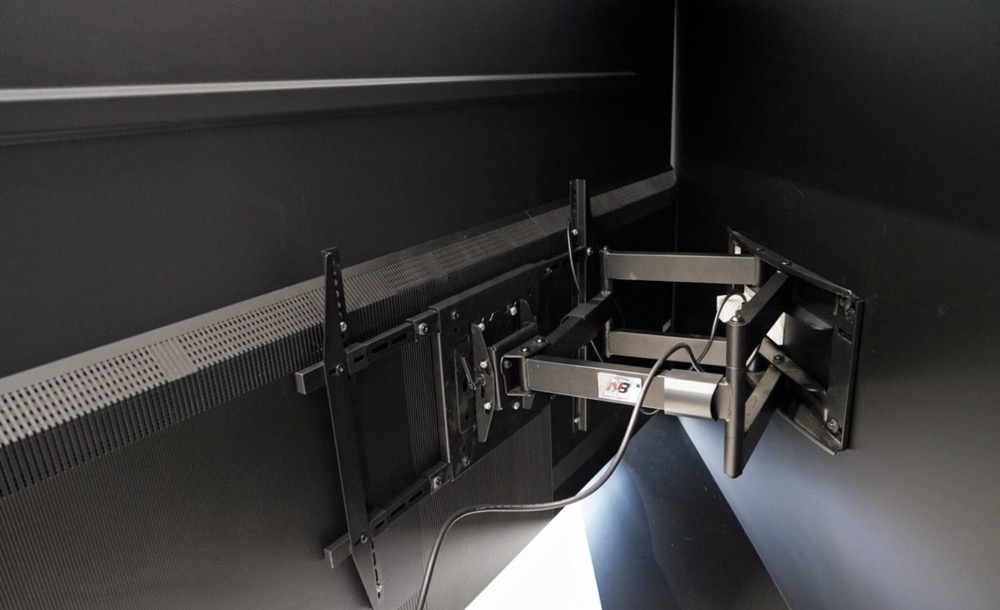Whether you’ve just made the big purchase or you’re already a proud owner who’s just looking for a change, figuring out how to mount your plasma TV to the wall can seem overwhelming. Don’t worry! We’re here to help you get started with easy instructions on what to buy, where to drill, and more. Read on to learn how to secure your screen to its new spot safely and securely.
Steps
Purchase a wall mount from a reputable plasma TV dealer, and ensure that it fits your TV.
Ensure you are purchasing the correct wall mount for your TV AND for the type of wall you will be mounting your TV on.
Consider what you will be doing with your cables.
If you are mounting your TV on a stud wall it is possible to thread your cable down the space behind the wallboard. Running the cables this way looks great but involves a lot of effort. An alternative would be to use a surface mount conduit. There are several easy to fit conduits available on the market that can produce some outstanding results.
For mounting your TV on a stud wall follow the next few steps.
Other wall type require that you follow the mount manufactures guidelines.Locate the wall studs in the wall you wish to hang the TV on. It is critical that the screws holding the TV to the wall are screwed into the solid wood of a stud, not just into the wallboard. The best way to find a stud is with a stud finder, which is available at any hardware store for less than $20. Be sure to find the center of the stud for the best results.When you find the center of a stud, mark it with pencil on the wall. Measure the vertical distance between the screw holes on the mount. After deciding how high to mount the TV, mark with pencil where you will place each screw.Double check that the mount will be level using a level. It is crucial that you mount it level. It will be hard to fix after the fact if you do it poorly, so please measure twice.Use big screws. Try #14 x 1.5 inch screws. For #14 screws, drill a pilot hole 13/64″ in diameter first.
Attach the mount with the screws.
Double check to ensure that it is level.
If you are running your cables through the wall, now would be a good time to drill a hole into the wall to run your cables.
Hang the TV on the mount.
Usually, this involves attaching rubber/plastic mounts to the back of the TV, placing them through holes in the mount, and letting it settle into place.
Double check the stability of the TV, and ensure that it is firmly in place.
Connect your wiring and enjoy your TV.
Tips
- Cut a piece of cardboard to the dimensions of your new TV and use it on the wall to get an idea of a good position.
- Often, power outlets are placed adjacent to a stud, so look for a stud there.
- Consider running wires through the wall for all of your TV inputs. It may cost more, but you never know when you’ll buy that new Hi-Def Blu-Ray player or games console.
Warnings
- Make sure the mount you purchase can handle more than the TV’s weight. If your TV weighs 50 lbs. look for a mount that is capable of handling 4x the TV weight or 200 lbs. It might sound like overkill, until a child pulls on the TV and it falls on them or someone trips near the TV and grabs it on their way down. Beware of the cheap “knock off” mounts.
- After hanging the mount (before you place the TV on it), find a way to add some weight to the mount to make sure it is absolutely firmly in place. Most flat screen TVs weight around 50-150 lbs.
- You should wire a proper wall outlet for your power source. Other wiring methods such as running an extension cord through the wall do not comply with building codes in most areas, and also pose a fire danger.
- If you are mounting above a fireplace, make sure it is adequately vented and not trapping heat or the majority of the heat is not flowing directly to the TV.
- Before you buy any wall mount, check and measure your wall. E.g. measure the distance between studs. Most swivel mounts will not mount to studs spaced 24″ apart. Most attach to 16″ spaced studs, but some only mount to studs spaced 14″ or less apart. This will help you select a mount that you will be able to attach to the wall without expensive modifications to your wall.
- Any data cables going into the wall must be to special code to pass any future inspection on your house (such as selling the house), for fire risk etc. When you are shopping for cables ensure you ask at the store. You will pay more but will not run the risk of having to pull them out after inspection.
- The biggest concern mounting on the wall is wiring in the wall. It’s hard to be sure, but be careful not to drill or screw into any wiring. Certain models of stud finders also include a feature which will detect live AC wiring.
